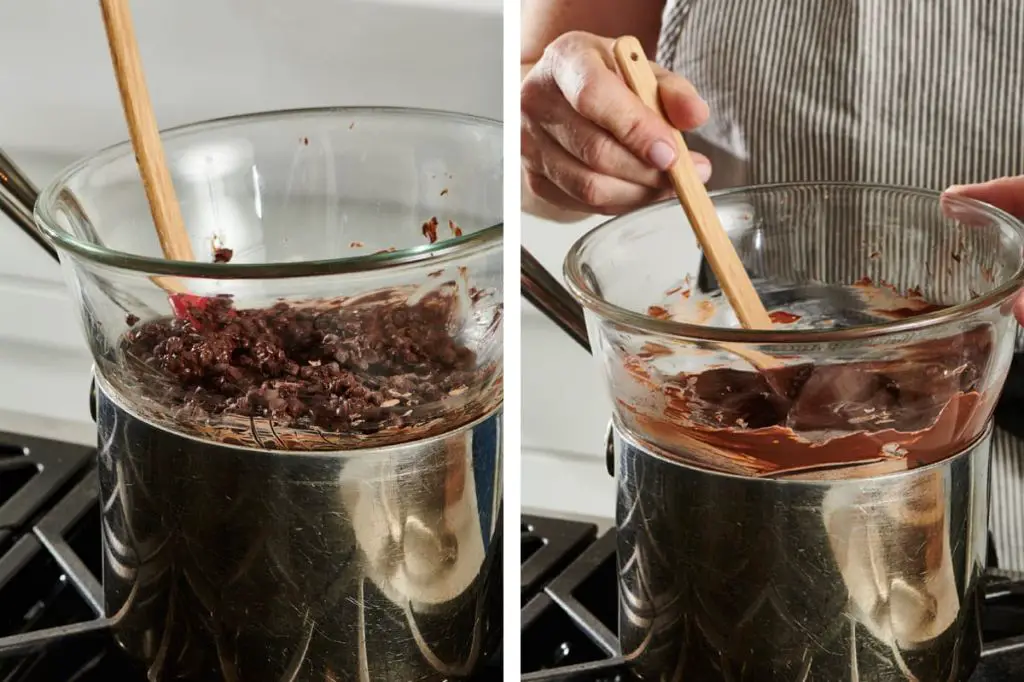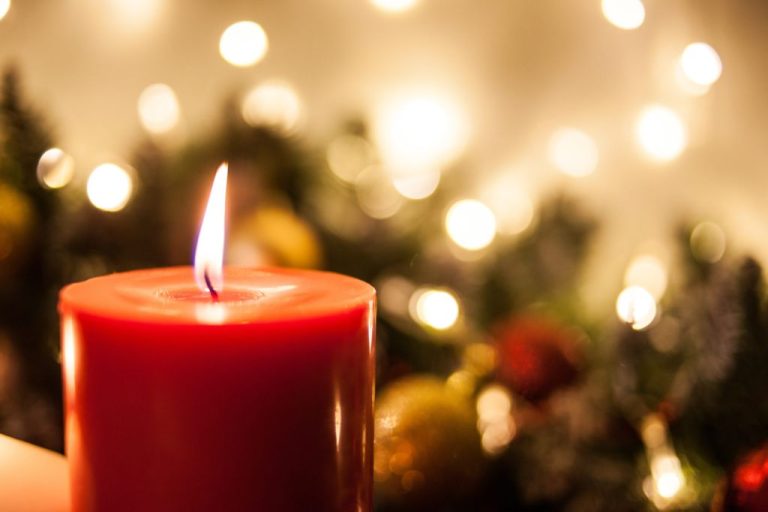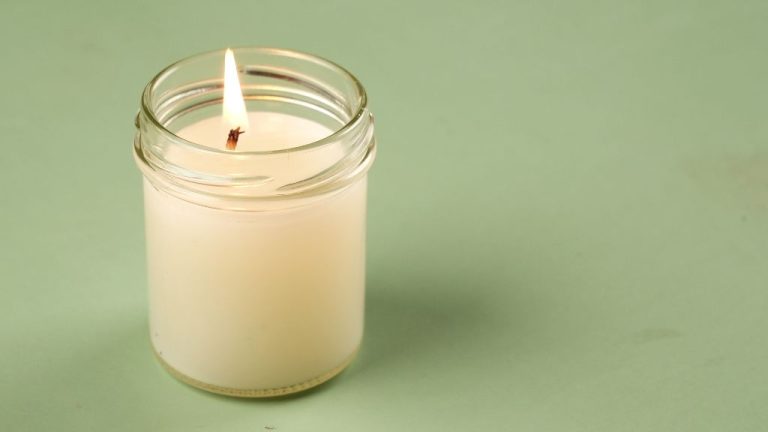How To Properly Do Double Boiler?
What is a Double Boiler?
A double boiler is a specialized piece of cookware that consists of two pots stacked together. The lower pot contains water and sits over a heat source. The upper pot sits inside the lower pot, suspended above the water. This allows the food in the upper pot to be gently heated by the steam from the simmering water, rather than being directly exposed to the heat source.
The key advantage of a double boiler is that it provides very gentle, even heat to foods. The temperature never exceeds 100°C or 212°F, which is the boiling point of water. This makes it ideal for delicate foods that require low heat, such as sauces, custards, chocolate, and cheese. The gentle heat prevents scorching and allows you to achieve silky smooth textures.
According to Jessica Gavin, simmering in a double boiler “surrounds the food in water that maintains a constant temperature, simmering cooks food evenly without the worry of scorching the pan.” This helps prevent overcooking and allows for precise control over the cooking process.
Benefits of Using a Double Boiler
One of the key benefits of using a double boiler is that it allows delicate foods like custards, sauces, and chocolate to cook evenly without burning. The steam heat from the bottom pot gently heats the top pot to create a stable, low temperature environment ideal for delicate cooking tasks (Source). This makes a double boiler perfect for melting chocolate without scorching it or making custards and sauces that need careful temperature control.
Additionally, the steam heat doesn’t impart any flavors like direct stovetop heating can. This allows you to cook subtle tasting foods like custards and sauces without altering their flavor. The top pot containing the food never exceeds the temperature of the boiling water in the bottom pot, preventing burning or scorching (Source). Overall, a double boiler provides a gentle, even heat that lends itself well to delicate cooking tasks where temperature control is critical.
Foods Best Suited to Double Boiler Cooking
A double boiler is perfectly suited for cooking delicate foods that need gentle, even heat. Some examples of foods that do well in a double boiler include:
- Custards – The gentle heat helps prevent curdling and results in smooth, creamy custards. Double boilers are great for making crème brûlée, flan, and lemon curd.
- Sauces – Hollandaise, béarnaise, and other delicate egg or dairy-based sauces can be cooked to perfection in a double boiler without curdling or separating.
- Melted chocolate – Chocolate is very sensitive to direct heat. Using a double boiler allows it to melt gradually without scorching for perfect chocolate sauces and ganaches.
- Delicate seafood – The steamy environment is ideal for poaching fish like salmon and cod or cooking shellfish such as lobster or scallops.
The key is controlling the temperature so it remains constant but below boiling point. This protects ingredients that can easily overcook or separate when exposed to direct heat. A double boiler provides the right cooking environment for these foods to turn out perfectly smooth and tender.
Choosing the Right Pots for a Double Boiler
When selecting pots for your double boiler, the most important factor is ensuring the inner pot fits partway into the outer pot with the lid on. You want the bottom of the inner pot to be suspended above, not touching, the bottom of the outer pot. This allows the water in the outer pot to gently heat the food in the inner pot.
Stainless steel and glass pots conduct heat evenly, making them ideal choices for a double boiler. Stainless steel is durable, affordable, and safe for stovetop use. Glass pots allow you to monitor the food as it cooks but can be more expensive and fragile. Avoid using plastic pots, which may melt from the steam heat.
Consider the ingredients you’ll be cooking when deciding on pot material. Delicate foods like custards and chocolate do best in glass pots, which prevent scorching. Stainless steel works for most ingredients but can react with acidic foods. Match your pots to the specific foods you want to make.
Setting Up Your Double Boiler
Setting up a double boiler is easy once you know the key steps. First, you’ll need two pots – one larger pot that will be used to hold water, and a smaller pot that will sit inside the larger one to hold your ingredients. The most important rule when setting up your double boiler is that the water in the outer pot should never touch the bottom of the inner pot.
To set up your double boiler properly:

- Fill the larger, outer pot about halfway with water. You want enough water to create steam without it boiling over or running out.
- Bring the water to a simmer over medium heat. You want it hot enough to create steam but not a full rolling boil.
- Place the smaller, inner pot inside the outer pot, resting it on top of the rim. Check that the bottom of the inner pot is not touching the water.
- Add your ingredients to the inner pot and continue cooking over the simmering water. The steam will gently and evenly heat the ingredients.
As long as you keep the water simmering and don’t let it touch the inner pot, the double boiler provides very gentle, even heating. This is perfect for delicate ingredients like chocolate, custards, sauces and more. For a helpful visual guide, check out this video on setting up a double boiler https://www.youtube.com/watch?v=EG5xF88vLFU.
Using Your Double Boiler
Once your double boiler is set up, you’re ready to start cooking. Here are some tips for getting the most out of your double boiler:
Stir the ingredients frequently, at least every 5 minutes or so. This promotes even cooking and prevents scorching on the bottom. For recipes like custards, stir gently to avoid curdling.
Monitor the water level and temperature. Make sure the bottom pot always has 1-2 inches of simmering water. Add more hot water as needed. Regulating the temperature is key for delicate recipes.
When melting chocolate in a double boiler, stir gently and heat just until the chocolate is about two-thirds melted. Then remove from heat and continue stirring until fully smooth. This prevents the chocolate from overheating and seizing up.
Check out this helpful visual guide for using a double boiler: https://www.webstaurantstore.com/blog/2406/what-is-a-double-boiler.html
Cleaning and Storing Your Double Boiler
Proper cleaning and storage is important for maintaining your double boiler and extending its lifespan. Here are some tips:
Avoid sudden temperature changes when cleaning. Do not put a hot double boiler pot or bowl directly into cold water, as this can damage or warp it. Allow it to cool down before washing.
Handwash pots and bowls carefully with warm, soapy water. Use a soft sponge or cloth to gently remove any food residue. Avoid abrasive scrubbers that could scratch the surfaces.1
To remove stubborn residue or odor, fill the pot with warm water and a bit of baking soda or unscented dish soap. Let it soak for 15-30 minutes before washing again.
Rinse and dry thoroughly after washing. Nest the pots/bowls together, with a paper towel between them, before storing to prevent scratches or dings.2
Store in a protected, dry place like a cupboard. Avoid exposing it to steam, extreme temperatures, or direct contact with other cookware.
Double Boiler Safety Tips
When using a double boiler, it’s important to keep some safety tips in mind:
Ensure the two pots fit together stably. If the top pot is too small or large for the bottom pot, it may tip over and spill hot contents which can cause burns. Select pots that nestle securely.
Handle hot pots very carefully. Use pot holders when moving the top pot on and off the bottom pot. The water in the bottom pot gets extremely hot which transfers heat to the top pot and contents. Allow pots to cool before handling.
Keep an eye on the water level. If the bottom pot boils dry, the top pot contents can burn. Check the water periodically and add more as needed. Ideally use enough water that it lasts the entire heating time.
For more tips, see this article on double boiler safety from DIY Candle Making: https://www.lovetoknow.com/home/projects-diy/candle-making-double-boilers
Troubleshooting Common Double Boiler Issues
Even when carefully following proper double boiler techniques, you may occasionally run into problems. Here are some of the most common issues and how to prevent them:
Burned or Overcooked Food
If your food is burning or overcooking in the double boiler, the most likely culprit is having the water boil too vigorously. The water should stay at a gentle simmer – bubbles should be barely breaking the surface (source). If the water is too hot, it will transfer too much heat to the top pot. Make sure to keep the heat low and monitor the water temperature.
Melted Inner Pot
Some double boiler pots, especially delicate materials like chocolate melters, can warp or melt if the water gets too hot. Always check your inner pot’s material limits before using. Keep the water at a gentle simmer, don’t allow it to boil, and be especially careful if using a plastic or silicone inner pot (source).
Water Leaking into Inner Pot
If water leaks from your lower pot into the food, you likely have too much water in the bottom or the pots aren’t fitting together snugly. Make sure your lower pot has just 1-2 inches of water, and that your pots nest closely without large gaps. Condensation is normal, but you want to prevent large drips for best results.
Recipes to Try in a Double Boiler
A double boiler is perfectly suited for cooking delicate foods that need gentle, even heat. Here are some of the most popular recipes to try in a double boiler:
Custards
Custards like crème brûlée, flan, and pot de crème require the slow, indirect heat of a double boiler to cook the eggs gently and prevent curdling. Simply combine eggs, cream or milk, sugar, and flavorings in the top pot and cook over simmering water in the bottom pot until thickened. Stir frequently and cook just until set.
Melted Chocolate
Using a double boiler is ideal for melting chocolate smoothly without any scorching or seizing up. Add chopped chocolate to the top pot and heat over barely simmering water, stirring occasionally until completely melted and smooth. Use melted chocolate for desserts like chocolate pots de crème, mousse, ganache, and more.
Hollandaise Sauce
Hollandaise is a delicate warm emulsion of egg yolks, butter, and lemon juice that can easily break if overheated. Prepare hollandaise in a double boiler by whisking egg yolks and lemon juice in the top pot, then gradually whisking in melted butter. The indirect heat prevents curdling.






